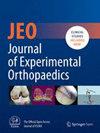The present study reviews the available scientific literature on artificial intelligence (AI)-assisted ultrasound-guided regional anaesthesia (UGRA) and evaluates the reported intraprocedural parameters and postprocedural outcomes.
A literature search was performed on 19 September 2023, using the Medline, EMBASE, CINAHL, Cochrane Library and Google Scholar databases by experts in electronic searching. All study designs were considered with no restrictions regarding patient characteristics or cohort size. Outcomes assessed included the accuracy of AI-model tracking, success at the first attempt, differences in outcomes between AI-assisted and unassisted UGRA, operator feedback and case-report data.
A joint adaptive median binary pattern (JAMBP) has been applied to improve the tracking procedure, while a particle filter (PF) is involved in feature extraction. JAMBP combined with PF was most accurate on all images for landmark identification, with accuracy scores of 0.83, 0.93 and 0.93 on original, preprocessed and filtered images, respectively. Evaluation of first-attempt success of spinal needle insertion revealed first-attempt success in most patients. When comparing AI application versus UGRA alone, a significant statistical difference (p < 0.05) was found for correct block view, correct structure identification and decrease in mean injection time, needle track adjustments and bone encounters in favour of having AI assistance. Assessment of operator feedback revealed that expert and nonexpert operator feedback was overall positive.
AI appears promising to enhance UGRA as well as to positively influence operator training. AI application of UGRA may improve the identification of anatomical structures and provide guidance for needle placement, reducing the risk of complications and improving patient outcomes.
Level IV.



